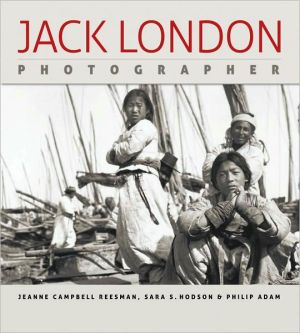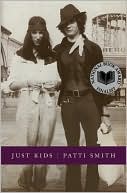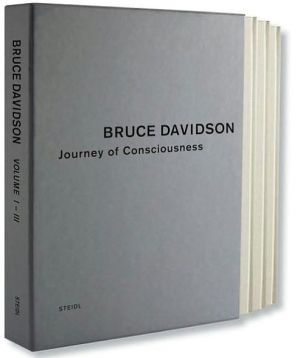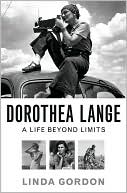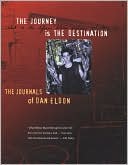Jack London, Photographer
Jack London (1876–1916) remains one of the most widely read American writers, known for his naturalist fiction, socialist novels and essays, journalism, and the many adventures that he shared with the world. London was also an accomplished photographer, producing nearly twelve thousand photographs during his lifetime. Jack London, Photographer, the first book devoted to London’s photography, reveals a vital dimension of his artistry, barely known until now.\ \ London’s subjects included...
Search in google:
Jack London (1876–1916) remains one of the most widely read American writers, known for his naturalist fiction, socialist novels and essays, journalism, and the many adventures that he shared with the world. London was also an accomplished photographer, producing nearly twelve thousand photographs during his lifetime. Jack London, Photographer, the first book devoted to London’s photography, reveals a vital dimension of his artistry, barely known until now. London’s subjects included such peoples as the ragged homeless of London’s East End and the freezing refugees of the Russo-Japanese War, the latter photographed on assignment for the Hearst Syndicate. For Collier’s magazine, London wrote his eyewitness account of the 1906 San Francisco earthquake and fire and returned two weeks later with his camera to document a city in ruins but slowly recovering. During his voyage aboard the Snark, London produced humane images of the South Seas islanders that contrasted dramatically with the period’s stereotypical portraits of indigenous peoples. In 1914 he documented the U.S. invasion of Veracruz during the Mexican Revolution. Although some of his images were used in newspaper and magazine stories and in his books The People of the Abyss and The Cruise of the Snark, the majority have remained unpublished until now. The volume’s more than two hundred photographs were printed from the original negatives in the California State Parks collection and from the original photographs in albums at the Huntington Library. They are reproduced here as duotones from silver gelatin prints. The general and chapter introductions place London’s photographs in the context of his writings and his times. London lived during the first true mass-media era, when the use of photographic images ushered in a new way of covering the news. With his discerning eye, London recorded historical moments through the faces and bodies of the people who lived them, creating memorable portraits of individuals whose cultural differences pale beside their common humanity.Library JournalThis book is an unanticipated landmark, for London's groundbreaking work as a photojournalist has remained hidden until now. These photos were made from long-forgotten negatives held by the California State Parks system, rediscovered during research for the 1906 San Francisco earthquake centenary. London was a prescient, timely genius; his work helped define the photojournalistic form, a new idea, now seen as the window into contemporary life. The book's visual bounty seems endless: London was the only American to document the Russo-Japanese battlefields in 1904; he recorded the 1906 San Francisco earthquake's aftermath; he chronicled the 1914 Mexican Revolution, shown here alongside heartbreaking shots of the dying South Pacific peoples he visited during a transoceanic voyage in 1907 08. London's seminal nonfiction work, The People of the Abyss, was accompanied by trailblazing imagery of the English underclass that readers can now see in expanded form. The images are paired with London's own vivid anecdotes, revealing his descriptive powers for a new generation. VERDICT Representing a major expansion and renewal of London's stature, this book will be of great appeal to a broad range of audiences interested in history, American literature, and photography.—Douglas F. Smith, Berkeley P.L., CA
Preface A Photographer's Reflections on Jack London\ Introduction. Jack London's "Human Documents"\ Chapter 1. The People of the Abyss (1903)\ Chapter 2. The Russo-Japanese War, 1904\ Chapter 3. The San Francisco Earthquake, 1906\ Chapter 4. The Cruise of the Snark (1907-1908)\ Chapter 5. The Voyage of the Dirigo, 1912\ Chapter 6. The Mexican Revolution, 1914\ Technical Notes Notes Bibliography Photo Credits Index
\ Library JournalThis book is an unanticipated landmark, for London's groundbreaking work as a photojournalist has remained hidden until now. These photos were made from long-forgotten negatives held by the California State Parks system, rediscovered during research for the 1906 San Francisco earthquake centenary. London was a prescient, timely genius; his work helped define the photojournalistic form, a new idea, now seen as the window into contemporary life. The book's visual bounty seems endless: London was the only American to document the Russo-Japanese battlefields in 1904; he recorded the 1906 San Francisco earthquake's aftermath; he chronicled the 1914 Mexican Revolution, shown here alongside heartbreaking shots of the dying South Pacific peoples he visited during a transoceanic voyage in 1907–08. London's seminal nonfiction work, The People of the Abyss, was accompanied by trailblazing imagery of the English underclass that readers can now see in expanded form. The images are paired with London's own vivid anecdotes, revealing his descriptive powers for a new generation. VERDICT Representing a major expansion and renewal of London's stature, this book will be of great appeal to a broad range of audiences interested in history, American literature, and photography.—Douglas F. Smith, Berkeley P.L., CA\ \
